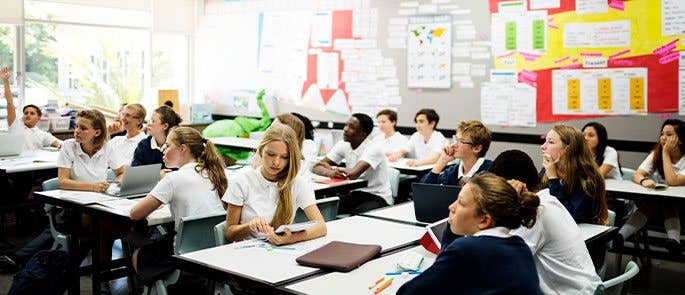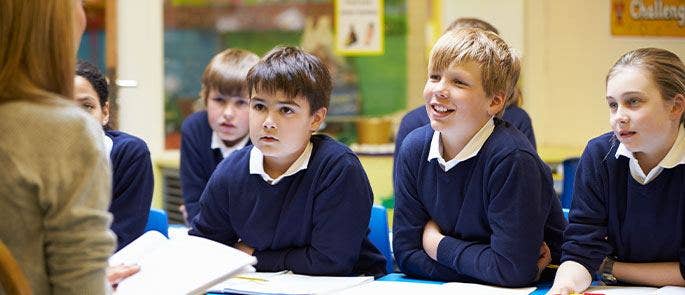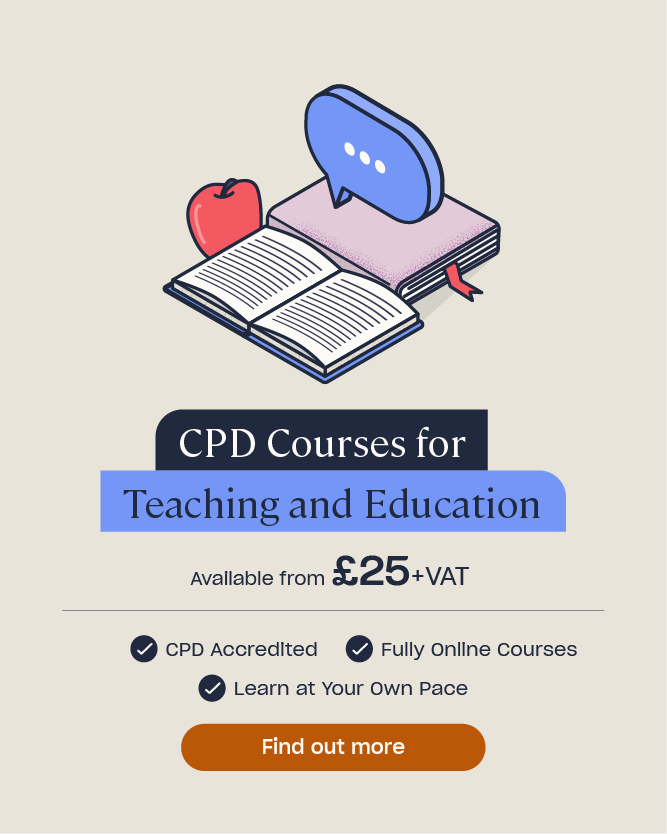How to Encourage Critical Thinking in the Classroom
Misinformation has seeped into almost every facet of our day-to-day lives. Sources of information that were once considered reliable and trustworthy, such as the internet or certain news outlets, are now overrun with inaccurate information intended to scandalise, instill fear and, in many cases, spread extremist and bigoted views. Children and young people are especially susceptible to this misinformation as they don’t necessarily have the life experience or cognitive skills to recognise or challenge it. This can lead to the spread of misinformation as fact which can have far reaching, life long consequences for children and young people.
Critical thinking enables children to question what they see and challenge what they are told. It encourages a deeper understanding of the world around us and a curiosity that dissuades from taking things at face value. When taught in schools, critical thinking can provide a student with life long transferable skills that can help them to identify extremist content and misinformation before it causes harm. In this article we will outline what critical thinking is, why it is important for children and young people and how you can encourage critical thinking in the classroom.
What is Critical Thinking?
Critical thinking is not one specific skill, rather it encompasses a range of skills that enable careful analysis, reasoned judgement and the rational processing of information. Critical thinking is about going beyond the surface and gaining a deeper understanding of a topic. This is achieved through in-depth analysis, questioning assumptions, recognising flaws in arguments and seeking further evidence. Whilst critical thinking can and should be taught in schools, it should not be thought of as an isolated standalone subject. Critical thinking skills are transferable and can be applied across all subjects and all facets of one’s personal life; it is as much about a deeper engagement with a given subject as it is about a deeper engagement with the world.

Critical thinking has been defined in various different ways over the years but each definition includes the core concept of purposeful thinking that encourages inquisitive curiosity and the objective questioning of information. Robert H. Ennis, a prominent figure on critical thinking and its importance in higher education, defines it as ‘reasonable reflective thinking [that is] focused on deciding what to believe or do.’ As such, critical thinking can be seen as an invaluable tool which encourages individuals to challenge the credibility of a source, to make well reasoned and evidenced deductions, and to think independently.
Critical thinking skills are highly transferable and don’t just help students to gain a deeper insight into school subjects. Critical thinking skills are vital lifelong skills and they positively impact a child’s problem-solving abilities, self-esteem and ability to engage with the world. For example, critical thinking encourages an individual to use credible sources and seek further evidence. In the wake of growing misinformation, media literacy and the ability to spot inaccurate or sensationalised news stories is essential. Good critical thinking skills can support a child’s media literacy skills by teaching them how to critically analyse content, recognise extremism and have the confidence to challenge the echo chamber around them. This is just one example of how critical thinking can be applied to other aspects of a child’s life, however it highlights the far reaching benefits of instilling a critical thinking framework through which a child can engage with the world.
Critical thinking is just as important for you as it is for your students. To learn more about critical thinking in the workplace take a look at our article: Critical Thinking at Work.
Importance of Critical Thinking in Education
It’s often argued that common sense can’t be taught, it must be learned and it’s not unheard of to hear a similar mentality around critical thinking. However, whilst life experiences undeniably inform and influence the development of common sense and critical thinking skills, both skills can be further strengthened in a classroom setting. When fostered in education, critical thinking enables students to learn how to develop arguments, present them in a clear and logical way, identify flaws in arguments and reach well reasoned conclusions. When these skills are taught across subjects it makes it easier for students to apply them in different situations and contexts, simultaneously strengthening their understanding of an individual topic and bolstering their ability to apply the same skills to other facets of life.
In 1980, Ennis argued that the ideal critical thinker could be identified by 12 dispositions and 18 abilities. Whilst those lists have been modified over time, the basic idea hasn’t changed and they highlight the important characteristics of a critical thinker. When critical thinking is taught in schools, students can adopt these dispositions and learn these abilities which can then be applied to all other aspects of school life, both academic and pastoral. Ennis’ lists should not be viewed as definitive or as a fixed checklist of what a critical thinker must be able to do, however they emphasise key traits that critical thinking can develop. Below you will find a selection of traits and abilities that Ennis argues are indicative of a critical thinker.

According to Ennis critical thinkers are disposed to:
- Seek and offer clear statements.
- Try to be well informed.
- Use credible sources and observations.
- Take into account the total situation.
- Be open-minded and withhold judgement when the evidence and reasons are insufficient.
- Seek as much precision as the situation requires.
According to Ennis critical thinkers have the ability to:
- Have a focus and pursue it.
- Analyse arguments.
- Ask and answer clarifying questions.
- Judge the credibility of a source.
- Make deductions.
- Think suppositionally.
- Check the quality of their own thinking (metacognition).
The lists above are not exhaustive nor are they the only dispositions and abilities of a critical thinker. Nevertheless, they showcase the important transferable skills that critical thinking can foster and how these skills can support a student throughout their academic career and beyond. In August 2024, education secretary Bridget Phillipson proposed that children in England should be taught how to identify extremist content and misinformation online. Developing a child’s critical thinking skills in school strengthens their analytical skills and in turn their ability to identify and challenge extremist content that they may engage with.
Want to Learn More?
Finding creative ways to introduce critical thinking can help to challenge your students and enhance their analytical skills. Strengthen your teaching skills with our wide range of CPD Courses for Teaching in Education.
Critical Thinking Activities for the Classroom
Critical thinking was at one point an A-Level subject with a set curriculum and exam, however, declining popularity eventually led exam boards to stop offering it. That being said, as mentioned, critical thinking is not one specific skill but a set of skills that can and should be fostered in many different academic environments. As such, the demise of critical thinking as an A-Level subject should not be seen as a lost opportunity, but a reminder that critical thinking can be introduced and developed in any and every subject. By teaching critical thinking in this way students are better able to apply these skills to different subjects and situations as they are encouraged to develop the manner in which they think, not just their recollection of specific facts and figures.
With this in mind, critical thinking shouldn’t be viewed as a set of prescriptive activities, but as fluid elements that can be easily introduced to encourage deeper thought and develop core skills. Below you will find examples of critical thinking activities that you can introduce in the classroom. The activities can be utilised in most subjects and used to introduce and develop key components of critical thinking.
Introduce Debates 
Debating creates an environment of curiosity and knowledge sharing whilst reaffirming the importance of mutual respect. Engaging students in a debate encourages them to develop well-reasoned arguments that are backed by evidence not opinion. This can be especially effective if you intentionally ask your students to debate a stance that you know they may not agree with, such as debating for the construction of a new motorway in Geography despite strong environmental concerns to the contrary.
Competitive debating gives students the chance to develop confidence and work together as a team. You could split the entire class and get them to debate on a topic that you have been discussing with half taking the pro and the other half taking the counter, or you could select a small group of students and then have the rest of the class decide who gave the most compelling argument. You can keep the debate informal or you could stick to a formal competitive debate structure and have a chair, a time limit and points of information. A point of information (POI) is when a member of the opposing team interrupts the current speaker to ask them a question. The speaker can then decide to accept or reject the POI.
Debating helps to develop communication skills as arguments need to be well thought out and delivered clearly and confidently. Debating encourages in-depth exploration of a topic as students must also consider contrary arguments that they may have to debate against. Moreover, POIs encourage students to think on their feet, challenge reasoning and introduce new perspectives all whilst engaging in a fast paced debate.
Hot Seating 
Critical thinking fuels curiosity and can drive a student to ask more compelling, in-depth questions in order to understand a topic. Hot seating enables students to explore this curiosity whilst another student attempts to provide valid rationale for their answer.
Hot seating can be done in most subjects but lends itself very well to subjects such as History, English and Drama. In hot seating one student impersonates a character from a book/play or a historical figure and is then asked questions by the rest of the class. The student impersonating the character or historical figure will have to give answers based on their contextual knowledge. Comparatively, the students asking the questions will need to ask questions that will help them to understand the bigger picture and pursue meaningful insights. For example, you may ask a student to impersonate a character from a book. They may then be asked why, as that character, they choose to perform a certain action. The student in the hot seat must use their knowledge of the book, the character, the setting, the historical context and more to provide a rational answer which can be challenged by the questioner (and the rest of the class) if it appears flawed.
Whilst critical thinking doesn’t encourage a student to make up answers, it does develop the skills that support deductive reasoning and reaching a well evidenced conclusion. Hot seating encourages students to ask thought provoking questions and infer meaning from context. It invites them to draw logical conclusions in order to justify the actions of others, delving beneath the surface to gain a deeper insight.
Mock Trial 
Mock trials enable students to learn more about the law and the judicial system in the UK. They can also be used to develop critical thinking skills as different students adopt different roles. In these roles students must develop an argument, persuade their peers or reach a conclusion based on the evidence that they have been presented. Students can be grouped into prosecution and defence and you can assign legal teams rather than solely having one student as the lawyer who does all the work. This facilitates teamwork and also encourages peer review of evidence as legal teams must collectively agree on what to present based on what they think will win their case. As members of the legal team, students must be able to present clear evidence supported by a rational argument. They must also be able to challenge points from the other team in order to best support their ‘client.’ Members of the jury must objectively listen to the evidence they are presented and use that to reach a well-reasoned conclusion. This also develops teamwork skills as if the jury’s decision must be unanimous then individual members of the jury must be able to justify their conclusion in order to persuade other members.
Mock trials can be scaled according to the age of the students ensuring that they remain appropriate and relatable. For example, you may choose to have a fairytale mock trial in which Goldilocks is put on trial for breaking into the home of the three bears for younger pupils. Comparatively, you may choose to conduct a mock trial for a more serious crime for older students. Scaling the trial to suit the age of the pupils ensures that it remains age appropriate but also deepens their investment. Older students are less likely to be invested in fairytale stories and more likely to actively participate in a mock trial for large scale fraud for example.
The examples above are activities that you can introduce into most subjects to develop a student’s critical thinking skills. However, as mentioned, critical thinking skills should be thought of as fluid elements that can be introduced to varying degrees in any subject. As such, it’s important to reiterate that these skills can also be developed by adopting certain strategies and modelling critical thinking skills to children.
Strategies that encourage critical thinking include:
- Encouraging students to ask exploratory questions.
- Asking students to justify their answer.
- Inviting students to recognise and challenge their assumptions on a given topic.
- Asking students to assess the credibility of a source.
- Encouraging classroom discussions in which students answer one another’s questions and share their different viewpoints.
Critical thinking encompasses numerous skills and abilities that enable deeper analysis and understanding. It is not one single skill and can be fostered in many different ways across all subjects. Critical thinking provides students with the skills to challenge misinformation, seek out credible sources and reach well reasoned conclusions. These skills not only help to strengthen academic study, they also enable children and young people to better understand the world around them and to challenge misinformation with confident discernment.
Further Resources:
- What is Active Learning?
- 8 Teaching Methods to Use in the Classroom
- CPD Courses for Teaching and Education











